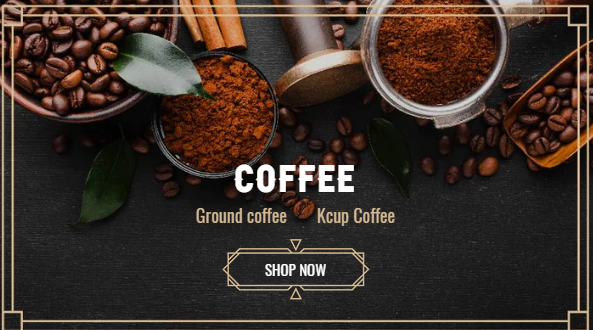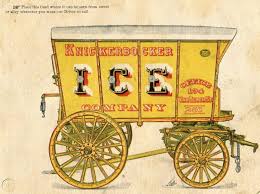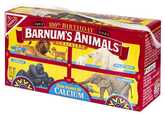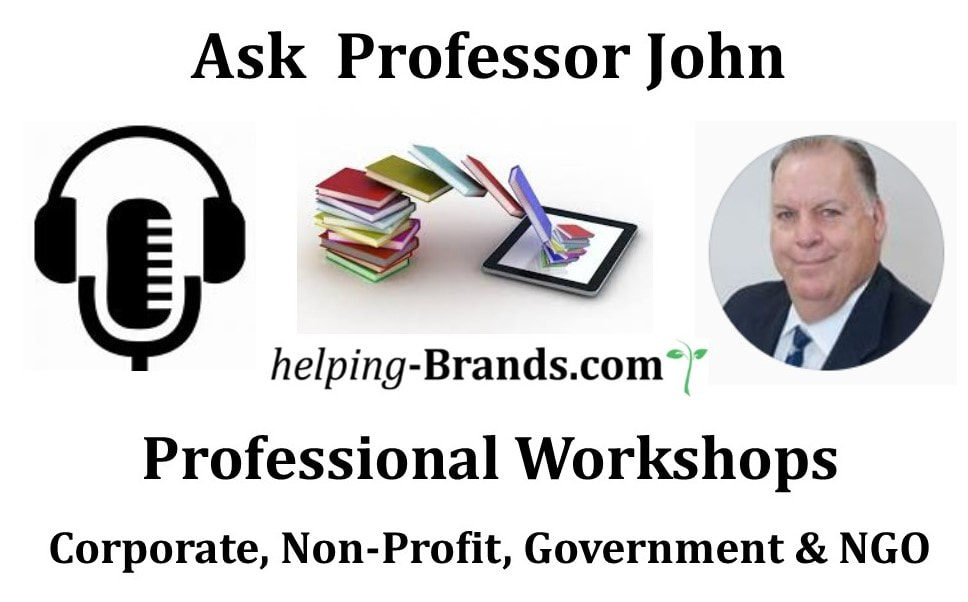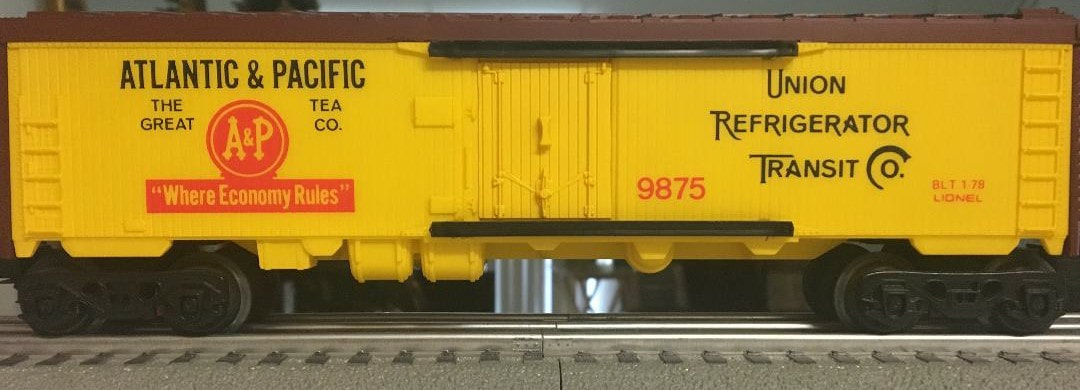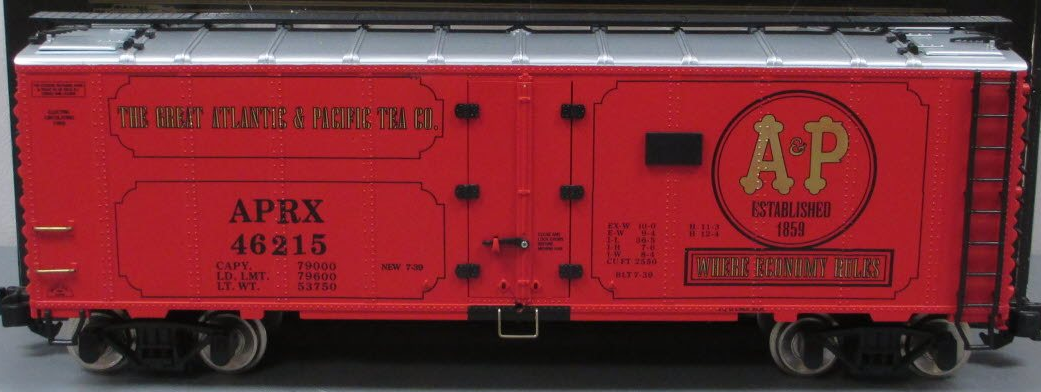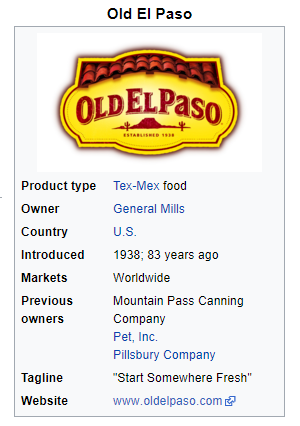The Nostalgic Brands site is run by John R. Fugazzie a former supermarket and Food Brands executive with The Great Atlantic & Pacific Tea Company and Wakefern/Shop Rite for the purpose of preserving the history of iconic brands.
Supermarkets | Food Brands | Cheese | Coffee | Bakery | Beer
The history of home milk delivery is quite fascinating and dates back to the late 1700s. Here's a brief overview:
Early Beginnings
Here are some of the largest milk home delivery companies in the USA:
Early Beginnings
- Late 1700s: Home milk delivery began in Vermont in 1785. At this time, families typically had their own cows, but as people moved to urban areas, they started buying milk from local dairy farmers
- Early 1800s: Milk was delivered in bulk containers, and customers would use their own jugs or pails to collect it
- 1878: The first glass milk bottle was patented, making it easier to deliver and track milk
- 1884: Henry D. Thatcher invented a glass milk bottle with a cap, further improving the delivery process
- 1920s-1950s: Home milk delivery became very popular. Milkmen delivered fresh milk daily to ensure it didn't spoil, as refrigeration was not common in homes
. Insulated boxes or milk boxes built into homes were used to keep the milk fresh
- Mid-1900s: The rise of supermarkets and household refrigerators led to a decline in home milk delivery. People began buying milk from stores and storing it at home
- Today: While not as common as it once was, home milk delivery has seen a resurgence in some areas, with companies offering fresh, local milk and other dairy products delivered directly to customers' homes
Here are some of the largest milk home delivery companies in the USA:
- Royal Crest Dairy: Based in Colorado, Royal Crest Dairy has been providing home delivery of milk and other dairy products since 1927
- Shatto Milk Company: This family-owned dairy farm in Missouri offers home delivery of fresh milk and other dairy products
- Modern Milkman: Operating in Connecticut, Modern Milkman delivers fresh milk and other farm products directly to customers' homes
- Marburger Farm Dairy: Located in Pennsylvania, Marburger Farm Dairy provides home delivery of milk and other dairy products,
Public companies 100 years old or more
This category is for Companies, corporations or businesses established in the years
1845 1846 1847 1848 1849 1850 1851 1852 1853 1854 1855 1856 1857 1858 1859 1860
1845 1846 1847 1848 1849 1850 1851 1852 1853 1854 1855 1856 1857 1858 1859 1860
100 Iconic Brands That Changed Grocery
|
Here are some of the oldest food brands in the USA that have stood the test of time:
|
|
2024 would have been the 165th anniversary |
Nostalgic Brands of
|
|
|
Baking PowerArm & Hammer is a well-known brand of baking soda and other household products, marketed by Church & Dwight. It's been a trusted household staple for over 170 years, known for its versatility and effectiveness in cooking, cleaning, personal care, and more
|
A&P's tremendous growth created problems with suppliers. Cream of Wheat, the largest breakfast food manufacturer, demanded that all retailers adhere to the cereal's pricing per box. A&P purchased the product at wholesale, 11 cents per box (3 cents less), and decided that a 1-cent markup was appropriate for its economy store format. Cream of Wheat cut off supplies and A&P sued. U.S. District Court Judge Charles Hough ruled against A&P, saying that a manufacturer can establish retail prices. As a result, A&P and other large chains expanded manufacturing of private brands
The art deco Graybar Electric building was built in the 1920s, and as Graybar was originally a steamship company, it had a maritime theme. Take a look at the mooring lines on the awning poles of a ship securing the building to Lexington Avenue complete with its anti-rat funnels. The funnels kept the rats from stowing away on ships. You will see three evil cast iron rats climbing above the building’s entrance. Even more unusual and not so obvious are the rosettes that connect the poles are actually decorated with rat heads.
A&P https://en.wikipedia.org › wiki › A&P
In 1974, the corporation also left its long-time headquarters in the Graybar Building, moving to Montvale, New Jersey. 1975–2001

Toll Bros. debuts 259-unit condo tower in final phase of Jersey City redevelopment
Real Estate NJ
... Great Atlantic & Pacific Tea Co.'s Annex property. Closings are well underway at the new building, where prices begin in the low $800,000s.
The partners last week announced the completion of the for-sale project at 151 Bay St., which features 259 homes in the downtown Powerhouse Arts District. It marks the third phase of a plan spearheaded by the company’s Toll Brothers City Living, joining two other buildings with a combined 659 rental and for-sale homes that have revitalized a former Manischewitz matzo factory and The Great Atlantic & Pacific Tea Co.’s Annex property.
Real Estate NJ
... Great Atlantic & Pacific Tea Co.'s Annex property. Closings are well underway at the new building, where prices begin in the low $800,000s.
The partners last week announced the completion of the for-sale project at 151 Bay St., which features 259 homes in the downtown Powerhouse Arts District. It marks the third phase of a plan spearheaded by the company’s Toll Brothers City Living, joining two other buildings with a combined 659 rental and for-sale homes that have revitalized a former Manischewitz matzo factory and The Great Atlantic & Pacific Tea Co.’s Annex property.
A&P Brand has been re-launched with Coffee & Tea by private company who purchased the brand name.
Legacy Brands purchased the A&P and Waldbaums brands and has now in 2021 launched Coffee and Team under the A&P brand historically A&P's brand of coffee was marketed under Eight O Clock brand which they sold off to an investment group who then resold it to Tata a major company from India.
Click here or below to buy A&P Coffee
Click here to buy A&P Coffee & Tea
Jane Parker has been back in business since 2017
Chris & Alex Ronacher purchased the brand from the bankruptcy
Since the late 1930’s, Jane Parker Fruitcake has been a staple of American families’ holiday traditions. There's something about the rich goodness of Jane Parker Fruitcake that folks just can't resist. That's because Jane Parker Fruit Cake is real, old-fashioned fruitcake, generously filled with more than 2/3 luscious fruits and nuts. Plump, juicy raisins, glazed pineapple, red cherries, and crunchy pecans are just some of the ingredients that make Jane Parker America's favorite fruit cake.
2017 - Present:
Two brothers, Chris & Alex Ronacher rescued the Jane Parker brand along with all the original recipes and begin baking the beloved fruit cakes again. To the delight of customers everywhere, Jane Parker is back, and the tradition continues!
2017 - Present:
Two brothers, Chris & Alex Ronacher rescued the Jane Parker brand along with all the original recipes and begin baking the beloved fruit cakes again. To the delight of customers everywhere, Jane Parker is back, and the tradition continues!
Jane Parker Bakery brand is a Nostalgic Brand and looking to expand its business. Contact me so we can explore your company handling this prodcut line, partner with Jane Parker to expand items and or cross promotion and marketing concepts. - John R. Fugazzie
Click Here to purchase Jane Parker on their site
Jane Parker Bakery Customer Testimonials
|
|
Since the late 1930’s, Jane Parker Fruit Cake has been a staple of American families’ holiday traditions. There's something about the rich goodness of Jane Parker Fruitcake that folks just can't resist. That's because Jane Parker Fruit Cake is real, old-fashioned fruitcake, generously filled with more than 2/3 luscious fruits and nuts. Plump, juicy raisins, tangy citron, and orange peel, glazed pineapple, red cherries, and crunchy pecans are just some of the ingredients that make Jane Parker America's favorite fruit cake.
Originally a brand of The Great Atlantic and Pacific Tea Company (A&P), Jane Parker Fruit Cake was baked in the 1930's through the 1960's. Then, in 2009, Jane Parker Fruit Cake was brought back for the 150th anniversary of A&P. In 2014, The Great Atlantic and Pacific Tea Company ceased production of Jane Parker Fruit Cakes, and shortly after filed for bankruptcy. It was feared that Jane Parker Fruitcakes would be gone forever. To the delight of Jane Parker Fruit Cake fans everywhere, in early 2017, the Jane Parker Fruit Cake brand, along with all original recipes, was purchased from A&P. We are excited to be bringing this iconic brand back to the market, just in time for the 2017 holiday season! 2019 https://www.janeparker.com/ Buy Jane parker Fruit Cakes using this link Facebook |
|
When were potato chips sold in tins?
1908. The Leominster Potato Chip Company was the first to sell potato chips commercially. They were sold to shopkeepers in bulk tins and glass jars which were then scooped into smaller tins or bags for consumers to transport home. |
A Quick History of the Potato Chip
The potato chip was invented in 1853 by George Crum. Crum was a Native American/African American chef at the Moon Lake Lodge resort in Saratoga Springs, New York, USA. French fries were popular at the restaurant, and one day a diner complained that the fries were too thick. Although Crum made a thinner batch, the customer was still unsatisfied. Crum finally made fries that were too thin to eat with a fork, hoping to annoy the extremely fussy customer. The customer, surprisingly enough, was happy – and potato chips were invented! Crum’s chips were originally called Saratoga Chips and potato crunches. They were soon packaged and sold in New England – Crum later opened his own restaurant. William Tappendon manufactured and marketed the chips in Cleveland, Ohio, in 1895. In the 1920s, a salesman named Herman Lay sold potato chips to the southern USA (selling the chips from the trunk of his car). In 1926, Laura Scudder (who owned a potato chip factory in Monterey Park, California) invented a wax paper potato chip bag to keep the chips fresh and crunchy. With further technology, innovation, and a countless number of variations and flavors, potato chips have only grown in popularity over the years! |
History of Jane Parker A&P's Bakery brand
A&P’s Jane Parker Brand Returns for Christmas: GARLAND POLLARD OCT 1, 2017
10.21.1992 - A&P; bakery to close Sale to H&S; means 210 jobs will be lost A&P; has only one bakery left, in Toronto.
2009 version
Private brands
When A&P was founded, there were no branded food products, and retailers sold food commodities in bulk. In 1870, the company became among the first to sell a branded pre-packaged food product, introducing "Thea-Necter" brand tea. In 1885, the name "A&P" was introduced on baking powder containers. Also in the 1880s, the company adopted the name "Eight-O'Clock" for its coffee. When A&P moved its headquarters to Jersey City, New Jersey in 1907, it included a bakery and coffee-roasting operation.
A&P's evolution into one of the country's largest food manufacturers was the result of the 1915 court decision in the Cream of Wheat litigation that upheld the right of a manufacturer to set retail prices. To keep prices down, A&P put emphasis on private label goods. By 1962, A&P operated 67 plants before consolidating many of them into the 1.5 million-square foot Horseheads facility, which was the largest food manufacturing plant in the world under one roof. As late as 1977, private label represented 25% of A&P's sales, with A&P manufactured products accounting for over 40% of this total. That year, A&P manufacturing reported sales of $750 million from its 23 plants(which by itself would have ranked A&P's manufacturing group at about number 350 in the Fortune 500).
Until the creation of a combined Manufacturing Group in 1975, the corporation's production operations were conducted by four separate divisions:
In 2008 and 2009, the corporation added the environmentally-sensitive Green Way brand, gourmet Food Emporium Trading Company brand, and low-cost Food Basics alternative.
When A&P was founded, there were no branded food products, and retailers sold food commodities in bulk. In 1870, the company became among the first to sell a branded pre-packaged food product, introducing "Thea-Necter" brand tea. In 1885, the name "A&P" was introduced on baking powder containers. Also in the 1880s, the company adopted the name "Eight-O'Clock" for its coffee. When A&P moved its headquarters to Jersey City, New Jersey in 1907, it included a bakery and coffee-roasting operation.
A&P's evolution into one of the country's largest food manufacturers was the result of the 1915 court decision in the Cream of Wheat litigation that upheld the right of a manufacturer to set retail prices. To keep prices down, A&P put emphasis on private label goods. By 1962, A&P operated 67 plants before consolidating many of them into the 1.5 million-square foot Horseheads facility, which was the largest food manufacturing plant in the world under one roof. As late as 1977, private label represented 25% of A&P's sales, with A&P manufactured products accounting for over 40% of this total. That year, A&P manufacturing reported sales of $750 million from its 23 plants(which by itself would have ranked A&P's manufacturing group at about number 350 in the Fortune 500).
Until the creation of a combined Manufacturing Group in 1975, the corporation's production operations were conducted by four separate divisions:
- Bakery (Grandmother's, Marvel, and Jane Parker): Until 1923, Jersey City was A&P's only bakery. A&P rapidly expanded the division until it was America's largest baker, with 37 plants. By 1977, the number of bakeries was reduced to seven; the division was closed during the 1981–82 restructuring.{sfn|Anderson|2002|p=98}} A Canadian baker continued to make Jane Parker cakes, but went bankrupt in 2014. Alex and Chris Ronacher took over the rights in 2016.
- Coffee (Eight O'Clock, Bokar, Red Circle): In 1919, A&P consolidated its coffee business into the "American Coffee Company", building roasting and grinding facilities. By 1977, A&P owned three coffee roasting plants, and one for canned coffee. The coffee operation survived the 1981–82 restructuring, not sold until 2003.
- Dairy: This division dates to 1922 when A&P purchased the White House Milk Company of West Bend, Wisconsin to produce evaporated milk. At that time, grocers rarely sold fresh milk because of the lack of refrigeration. By 1977, the division operated three dairies, a cheese plant, and a dry milk plant.
- Grocery (Quaker Maid, Ann Page, Our Own Tea): In 1907, A&P opened a vegetable cannery. After World War I, A&P took advantage of the collapse of canned salmon prices to acquire canneries in Alaska. A&P then acquired facilities to produce a wide range of canned goods, frozen foods, nuts, tea bags, pasta, peanut butter, detergents, insecticides, gelatin, paper goods, and candy. A&P also operated a printing plant to produce labels and packaging for the other facilities, and promotional material for the stores. By 1977, A&P operated the Horseheads plant, plus six smaller facilities.
In 2008 and 2009, the corporation added the environmentally-sensitive Green Way brand, gourmet Food Emporium Trading Company brand, and low-cost Food Basics alternative.
History of Eight O Clock CoffeeA&P was established as "Gilman & Company" in 1859, and began selling bags of whole bean coffee on their own. Their coffee, however, was not given a true official name at that time, being sometimes called "Eight O'Clock Breakfast Coffee" at the start.
In 1922, the coffee cost 25¢ a pound.In 1919, in contrast with the introduction of two other coffee lines, Bokar and Red Circle, the coffee was finally given its official name;[1] A&P supposedly conducted a survey asking people what time of day they drank coffee most. The majority of those surveyed reported that they typically drank coffee at 8 a.m. and 8 p.m. A&P then went ahead and took out the word "Breakfast" from the name, rebranding its signature coffee as simply "Eight O'Clock". In the 1930s, Eight O'Clock coffee had gained over a quarter of the U.S. market share. By 1930, it was the most popular brand of coffee in the United States. A&P, however, began to decline in the 1950s, closing stores and leaving some mass U.S. markets in the process. In 1979, the company licensed its branding division, Compass Foods, Inc., to sell Eight O'Clock Coffee to other retailers including competing supermarket chains; among them is Pathmark, a supermarket that broke away from the ShopRite retailers' cooperative in 1960s, which A&P acquired in 2007. In 2003, A&P spun off the Eight O'Clock Coffee brand to Gryphon Investors, a private equity firm based in San Francisco, California, which used the brand to create the Eight O'Clock Coffee Company. A few weeks later, Eight O'Clock's ground coffee line was introduced. Gryphon Investors would soon sell Eight O'Clock Coffee Company to Tata Global Beverages in 2006. In 2009, Consumer Reports rated Eight O'Clock Coffee's 100 percent Colombian brew as the "best buy" for ground brews, beating well-known brands, such as Folgers, Maxwell House and Starbucks. On August 8, 2013, the entire Eight O'Clock Coffee line was revamped with new packaging and new flavors. Also, the Eight o Clock coffee brand produced an instant coffee, though this seems to have been only sold at A&P family stores and thus has been retired with the closing of the chain in 2015. The history continues now under TataFirst Checkout Magazine
(Note the issues of Woman’s Day for sale in the picture. A&P launched this still popular woman’s magazine in the 1930s as a way to sell groceries and sold it exclusively at its stores until 1958 when a publishing company took it over.) After A&P Launched Women's Day Safeway Launched their own magazine Family Circle both still mainstays of the magazines at checkouts in all supermarkets owned by major publishing companies today.
Hilco Auctions A&P Brand Portfolio: GARLAND POLLARD OCT 24, 2015
Hilco Streambank, a division of the liquidation company that is working with A&P to dispose of its assets, announced on Friday that it is seeking bids for six store names – A&P, Pathmark, Waldbaums, Food Basics, SuperFresh, and Best Cellars – and for eight private label brand names.
Founded Scranton, Pennsylvania, U.S. (1872, as Jones Brothers Tea Company) (Original), November 9, 2021 (Revival)
Founder Cyrus D. Jones Defunct July 2, 2013 (Original) The original company was purchased by C&S Wholesale Grocers in 2001 and downsized. The remainder of the company was purchased by Tops Markets in 2012 and folded into the Tops brand in 2013. C&S Wholesale Grocers revived the brand after purchasing some stores due to the merger of Tops Friendly Markets and Price Chopper Supermarkets Headquarters Scranton, Pennsylvania (original) 68 Jay Street, Brooklyn, New York (??–1951??) Elmwood Park, New Jersey (1951–1987) Wayne, New Jersey (1987–2001) Clifton Park, New York (2001–2013) Depew, New York (from time of acquisition by Tops) Number of locations12 (2021) Website mygrandunion.com 1974–2002 logo
Early beginnings
1951–1974 ShopRite logoShopRite originated in 1946, when a Del Monte Foods sales representative talked to independent grocers in Newark, New Jersey. The grocers were having problems getting reasonable prices for wholesale goods. The Del Monte representative suggested the grocers try cooperative buying. Seven of the grocers agreed; paying $1,000 each to launch Wakefern Food Corp., which was incorporated on December 5, 1946. In 1951, the name ShopRite was created. In 1958, ShopRite cut prices by 10% as an alternative to giving away trading stamps, which other supermarkets in New Jersey were doing. The move was successful, drawing customers and helping create more ShopRite stores. By 1961, ShopRite had 70 members, totaling $100 million in annual sales. The breakaway of Supermarkets General 1974–2002 ShopRite logo, still in use at some supermarketsOne large member, Supermarkets General, pulled out of Wakefern in the late 1960s, halving the number of stores. The Supermarkets General stores became Pathmark in 1968. The remaining Wakefern members redoubled their efforts, adopted "one member, one vote" as a management principle, and expanded aggressively. By the late 1970s, the volume lost from Supermarkets General's departure was restored. For many years, ShopRite and Pathmark were extremely competitive on price in the New York Metro area, and each one had its loyal customer base. A highly leveraged management buy-out in the late 1980s left Pathmark saddled with too much debt, and the supermarket chain had no cash to fix up its stores, or invest in lower prices. At the same time, ShopRite stores were being replaced and rebuilt, stealing market share away from Pathmark. The Pathmark chain was sold to A&P in 2007. A&P ran Pathmark as a division, but was unsuccessful in turning around the banner's fortunes. A&P filed for bankruptcy and sold or liquidated its stores in 2015, including approximately 150 Pathmark stores. Wakefern and its cooperative members acquired nine Pathmark locations along with several other former A&P banners with the intention of opening ShopRite, Price Rite and The Fresh Grocer locations. The "Can-Can Sale" ShopRite location in Rochelle Park, New Jersey Owned by Glass Gardens In 1971, ShopRite introduced their Can-Can Sale, where canned goods (and eventually other products) were placed on steep discounts, and is held in January. Until the early 1990s the sale was held in the second and third weeks of January but expanded to the entire month. Animated commercials for this promotion feature a chorus line of cancan dancers and a French artiste, though the style changed on several occasions over the years. In 2002, ShopRite expanded that sale to twice a year when they introduced the Summer Can-Can Sale, held in July. In 2018, the Summer Can-Can Sale was discontinued, replaced with the "Can It Get Any Hotter?" sale. Price Plus Club and beyond In 1989, ShopRite introduced the Price Plus Club Card, which eventually merged with the Check Cashing Card (for those that use it for that purpose as well); it is free of charge to acquire. Having a Price Plus Card enables shoppers to receive special weekly discounts, listed in circulars mailed with local newspapers. Most sales are chain-wide regardless of owner but sometimes in a particular region, valid for all area ShopRites, however some stores choose to put special items on sale based on stock. The Price Plus Card also tracks purchases. In 1996, ShopRite launched its own line (with Dietz & Watson) of deli meats, cheeses and complements with its private label, Black Bear of the Black Forest, to compete against the expansion of Boar's Head in competitor's supermarkets. In 2011, over 15 million pounds of Black Bear slicing meats and cheeses were sold at ShopRite. Since 1999, ShopRite has offered an online grocery shopping service on its website, under the service name ShopRite from Home. For an extra charge, ShopRite employees fulfill a customer's shopping order at a local ShopRite; the customer then schedules either a home delivery or an at-store pick-up. Entering MarylandIn 2007, Klein's Supermarkets, a local chain of family-owned supermarkets in Harford County, Maryland, joined the Wakefern cooperative, expanding the ShopRite banner into the Baltimore metropolitan area. The seven original Klein's Supermarkets that are now ShopRite supermarkets are located throughout Northeastern and Central Maryland, and the company has opened two additional Maryland ShopRite stores. In addition, Wakefern member Collins Family Markets has opened a Maryland ShopRite store in Glen Burnie (this store is closing as of April 2019), and another member, Village Supermarkets, acquired two former SuperFresh stores in Lutherville-Timonium and Silver Spring and converted them to ShopRite Supermarkets. www2.wakefern.com
Meaning of the Wakefern name The name "Wakefern" is a portmanteau of the founders' names: W for Louis Weiss, A for Sam and Al Aidekman, K for Abe Kesselman, E for Leo Eisenberg, and FERN for Dave Fern, although the company adopted the name ShopRite for its stores in 1951. Cooperative overview[edit]Wakefern owns one of the Northeast's largest trucking fleets and is the fourth-largest cooperative in the United States. In fiscal year 2016, its revenue was US$ 16 billion, and US$ 16.3 billion in 2017. In 2011, Supermarket News gave Wakefern its Retailer Excellence Award and The Griffin Report and Progressive Grocer named Wakefern its Retailer of the Year. In 2012, this company was named one of the Best Places to Work in N.J. by NJBIZ Magazine. As of 2011, Wakefern was ranked 17th by sales among all supermarket operators in the U.S. Wakefern also created and operates or franchises the Price Rite limited-assortment chain (based in Wethersfield, Connecticut) of stores in Connecticut, Maryland, Massachusetts, New Hampshire, New Jersey, New York, Pennsylvania, Rhode Island, and Virginia. Dearborn Market is a supermarket in New Jersey. Readington Farms, Inc. processes and distributes milk products in New Jersey, Pennsylvania, Delaware, New York, Connecticut, Massachusetts, and Rhode Island. On August 1, 2013, Wakefern added The Fresh Grocer banner, an eight-store chain based in Drexel Hill, Pennsylvania, when Burns Supermarkets joined the cooperative. One of the stores was converted to the ShopRite name while the others retained the Fresh Grocer name.[7] The banner has since been adopted by stores operated by other members of the cooperative. Wakefern supplies all of its members' ShopRite stores as well as the Price Rite and The Fresh Grocer chains, and Dearborn Market. In July 2007, the cooperative announced that for the first time it was offering its wholesale services to third-party supermarket operators, in the Northeastern United States and other areas of the country. Since then, Wakefern has announced deals to supply the Gristedes and Morton Williams chains of supermarkets in the New York City area, Heinen's Fine Foods chain in Ohio, as well as The Market Place in Bermuda Wakefern also provides its members' stores with services such as: computer services, insurance, advertising, marketing, merchandising and procurement.[8] Member stores include the publicly traded Village Super Market.[9] Wakefern currently has a total of seven warehouses in New Jersey and Pennsylvania. You might think we live in a special time. We can shop using our phones and get anything delivered to our houses on the same day even.
But consumers were doing that 100 years ago. They could even get a house delivered. For decades, Sears sold home kits in its catalog. Many of us forget that before the internet, there was the Sears catalog. The first issue was published in 1887. Business took off after 1896 when the Post Office expanded routes to include Rural Free Delivery so it could reach customers in even the most remote locations. Catalogs ran hundreds of pages and brought the store to the consumer. By 1929, Sears was America’s second-largest retailer, right behind the Great Atlantic & Pacific Tea Company. But this was just the start… The company wanted to be more than a store, so management created Allstate Insurance in 1931. Agents were in Sears stores two years later. By the 1980s, the company operated Dean Witter for investments and Coldwell Banker for Real Estate. Seeing the importance of technology, Sears launched online content provider Prodigy in 1984. The Discover credit card followed the next year. By then, Sears was the largest retailer in the nation, but it was stretching itself thin… Walmart then took Sears’ retail crown in 1990. A telephone is a telecommunications device that permits two or more users to conduct a conversation when they are too far apart to be heard directly. A telephone converts sound, typically and most efficiently the human voice, into electronic signals that are transmitted via cables and other communication channels to another telephone which reproduces the sound to the receiving user. The term is derived from Greek: τῆλε (tēle, far) and φωνή (phōnē, voice), together meaning distant voice. A common short form of the term is phone, which came into use almost immediately after the first patent was issued.[1]
In 1876, Alexander Graham Bell was the first to be granted a United States patent for a device that produced clearly intelligible replication of the human voice at a second device.[2] This instrument was further developed by many others, and became rapidly indispensable in business, government, and in households. Telephone numbers ranging from 1-3 digits first appear in the 1892-1893 City Directory. Telephone numbers ranging up to 4 digits first appear in the 1905 City Directory. Telephone numbers ranging up to 5 digits first appear in the 1917 City Directory.
Knickerbocker Ice Company, an Ice trade company, was founded by John J. Felter, John G. Perry, and Edward Felter in 1831 on the eastern bank of Rockland Lake in the hamlets of Congers and Valley Cottage in Rockland County, New York. It rapidly became a commercial success because it was the cleanest and purest ice of the Hudson River Valley region. Icehouses could be found along the Hudson River and on lakes from the Catskills to Albany making the Hudson River Valley the largest producer of ice in the area. Aware of the purity of the ice, numerous companies purchased land around Rockland Lake hoping to gain complete control of the lake.
In 1855, the Knickerbocker Ice Company was incorporated from the consolidation of the surrounding companies, which each brought valuable techniques to improve the harvesting of ice. When the gravity rail was built in 1856 and purchased its former rival, the Washington Ice Company, as a tow company in 1869 then purchased the entire company for the then astronomical sum of $1.1 million. see more on en.wikipedia.org/wiki/Knickerbocker_Ice_Company Iconic Brand news:Pearl Milling Company history Pearl Milling Company (1889–1890)
Nabisco uncages its animal crackers after 116 yearsGeorge Weston Limited, Weston or Weston'sGeorge Weston Limited, often referred to as Weston or Weston's, is a Canadian food processing and distribution company. Founded by George Weston in 1882, the company today consists of Weston Foods, a wholly owned subsidiary, and Loblaw Companies Limited, the country's largest supermarket retailer, in which it maintains controlling interest. Retail brands include President's Choice, No Name, and Joe Fresh, in addition to bakery brands Wonder, Country Harvest, D'Italiano, Ready Bake and Gadoua. The company is controlled by the Weston family, which owns a majority share in George Weston Limited.
History of J.A. Folger & Co., San Francisco a parellel path to Eight O'Clock Coffee on west coast
Retro brand of folgers just launched 1850 a premium brand launched in 2018 available in Whole-bean, Ground, K-Cup® pods, & Iced Coffee.
The precursor of the Folger Coffee Company was founded in 1850 in San Francisco, California, U.S., as the Pioneer Steam Coffee and Spice Mills. The founding owner, William H. Bovee, saw an opportunity to produce roasted and ground coffee ready for brewing. Before that, Californians had to purchase green coffee beans, and roast and grind them on their own. To help build his mill, Bovee hired James A. Folger as a carpenter. James had arrived from Nantucket Island at the age of 15 with his two older brothers during the California Gold Rush. In the 1850s, kerosene began to offer a cheaper alternative to whale oil, which had been Nantucket's life-blood, resulting in the re-purposing of many of its ships to bring coffee from South America to San Francisco. After working at Bovee’s mill for nearly a year, James had saved enough money to stake a claim in the company and headed out to mine for gold. He agreed to carry along samples of coffee and spices, taking orders from grocery stores along the way. Upon his return to San Francisco in 1865, James became a full partner of The Pioneer Steam Coffee and Spice Mills. In 1872, he bought out the other partners and renamed the company to J.A. Folger & Co.
In 1861, James married. He and his wife had four children, and two of the children worked for the family business. In 1889, James died, and his oldest son, James A. Folger II, stepped into the role of president of J.A. Folger & Co at the age of 26. In the 1900s, the company began to grow dramatically due primarily to a salesman named Frank P. Atha. Atha sold coffee in the California area, but proposed to James Folger II that he open and manage a Folgers Coffee plant in Texas. The company grew exponentially after Atha opened the Texas plant. Under the mid-20th century leadership of Peter Folger, the brand became one of the principal coffee concerns in North America, the world's largest coffee market. Procter & Gamble acquired Folger's in 1963 and removed the apostrophe from its name.[citation needed] During P&G’s ownership, Folgers became the number one coffee brand in America. P&G announced in January 2008 that Folgers would be spun off into a separate Cincinnati-based company but reversed itself that June and announced Folgers would be acquired by the end of 2008 by The J.M. Smucker Company. Utilizing a rare financial technique called a Reverse Morris Trust, Smucker purchased Folgers in November 2008 and made it a subsidiary. Marcal Historical Timeline
1905 Company founder, Nicolas Marcalus, immigrates to the US from Petralia, Sicily as a teenager. 1932 Marcalus sells the Automatic Paper Machinery Co, which he had formed with a partner to produce Cutrite Waxed Paper. With the profits from the sale of this business, he launched Marcalus Manufacturing Company (which later became Marcal Paper Mills, Inc). 1956 Marcalus is granted three patents by the US Patent Office – Paper dispensing receptacle (1901006), dispensing package for cellulose tissue sheets (2085882), and Tissue sheet dispenser (2580982). 1978 Company founder, Nicolas Marcalus, passes away at the age of 86. Throughout his life, he achieved much success making groundbreaking advances in the paper manufacturing industry. Some of his inventions included a machine which removed the black skin from pepper, a water heater for shaving, an electric heating pad, and the first automatic winder for packaging toilet paper. 1981 Marcal closes 2 of their paper mills in Mechanic Falls, Maine; which were the last two mills operating in the town. This allowed for a more diversified economy and tax base to develop in the area. 2000 Nicolas R. Marcalus (great grandson of founder) is honored by his alma mater, the Stevens Institute of Technology, with the Stevens Honors Award for the Marcal’s continuous innovation and dedication to the recycled manufacturing process. 2008 Marcal Paper Mills, Inc was purchased by Highland Capital Management for approximately $160 million, forming Marcal Paper Mills LLC and ending four generations of family ownership. Marcal Small Steps, a new product line featuring 100% recycled paper products, is launched in December. 
2012 Atlas Holdings portfolio company Soundview Paper Company has acquired Marcal Paper Mills, a paper company based in Elmwood Park, New Jersey.
2019 Fire destroys the Plant THE STORY OF THE PLASTIC BAG—the kind that is so ubiquitous in grocery stores, in gutters, in the branches of trees—is a story of persuasion, one that began with a battle between paper and plastic in the hearts of the American people.
“People are fond of the old paper bag,” Peter Bunten explained to the New York Times in 1984. “It’s as American as the flag and apple pie and all those other red, white, and blue clichés.” At the time, Bunten worked for American Paper Institute, and the plastic bag, first introduced to grocery stores in 1979, was ready to challenge the paper bag’s supremacy over how people carted home groceries—a $600 million market at the time. To the plastics industry, the grocery bag was “the last stronghold” of the American supermarket, Ronald Schmeider, marketing manager at Mobil Chemical, a subsidiary of what is now ExxonMobil, told the Los Angeles Times in 1986. Plastics already had conquered the meat tray, the egg carton, and the produce and bread bag, jobs previously performed by paper. But the paper grocery bag proved harder to supplant. 
From the time of their creation, Necco Wafers have been enjoyed all over the world. They were carried by soldiers during the Civil War. The candy also sustained explorers on expeditions to the North and South Poles in the early 1900s. Two and a half tons of Necco Wafers amounted to about a pound a week for each person during their two-year stay. During World War II, the U.S. government requisitioned a major portion of Necco Wafers production for morale boosting. The candy was perfect for shipping to troops overseas since it doesn’t melt and is very portable, the company says.
"Some of them started carrying meat, some of the stores started carrying dairy products," he says. "And the Hartfords also decided to expand into manufacturing. This was a pretty dramatic idea. The idea was that the A&P could buy bakeries, could buy salmon canneries, could buy vegetable canning plants, dairy plants, and [the company] could run these to supply its stores."
Controlling both the retail store and the supply chain gave the A&P a huge advantage over corner grocery stores because the A&P could run the factories at a lower cost. In addition, the A&P started to bypass wholesalers and go directly to distributors for various products. By the 1990s, longtime house brands like Ann Page and Jane Parker had been retired with Jane Parker Fruit Cakes coming back into the market in 2017.
The Great Atlantic & Pacific Tea Company, better known as A&P, was an American chain of grocery stores that ceased supermarket operations in November 2015, after 156 years in business. From 1915 through 1975, A&P was the largest grocery retailer in the United States (and until 1965, the largest U.S. retailer of any kind). A&P was considered an American icon that, according to The Wall Street Journal, "was as well known as McDonald's or Google is today", and was "the Walmart before Walmart". Known for innovation, A&P and the supermarkets that followed its lead significantly improved nutritional habits by making available a vast assortment of food products at much lower costs. Until 1982, A&P also was a large food manufacturer. In his 1952 book, American Capitalism, John Kenneth Galbraith cited A&P's manufacturing strategy as a classic example of countervailing power that was a welcome alternative to state price controls.
Founded in 1859 by George Gilman as "Gilman & Company", within a few years the firm opened a small chain of retail tea and coffee stores in New York City, and operated a national mail order business. The firm grew to 70 stores by 1878, when Gilman passed management to George Huntington Hartford, who turned A&P into the country's first grocery chain. In 1900, it operated almost 200 stores. After Hartford acquired ownership, A&P grew dramatically by introducing the economy store concept in 1912, growing to 1,600 stores in 1915. After World War I, it added stores that offered meat and produce, while expanding manufacturing. In 1930, A&P, now the world's largest retailer, reached $2.9 billion in sales with 16,000 stores. In 1936, it adopted the self-serve supermarket concept and opened 4,000 larger stores (while phasing out many of its smaller units) by 1950. A&P Canada History
In 1927, A&P opened its first stores in Canada. By 1929, A&P was present in 200 communities in Ontario and Quebec. A&P Canada left the Quebec market in 1984, and in 1985 acquired Dominion Stores in Ontario. It acquired Steinberg's Ontario grocery store chains Miracle Food Mart and Ultra Food&Drug in 1990 when the company divested them under new management. In 1999, it acquired the Barn Markets, based in Hamilton, Ontario, and opened its first discount grocery store, Food Basics. In 2005, A&P Canada Co. operated 135 stores under the banners of: A&P, Dominion and Ultra Food & Drug, in addition to The Barn Markets and Food Basics. It employed over 34,000 employees in Ontario. On July 19, 2005, Metro Inc. announced that it had reached an agreement with The Great Atlantic & Pacific Tea Company, Inc. and its subsidiary, A&P Luxembourg S.à.r.l., to acquire all of the issued and outstanding common shares of A&P Canada, for an acquisition price of $1.7 billion, consisting of $1.2 billion in cash and $500 million in the form of treasury shares of Metro. The sale was completed on August 15, 2005. On August 7, 2008, Metro announced it would invest $200 million consolidating the company's conventional food stores under the Metro banner. Over a period of 15 months, all Dominion, A&P, Loeb, The Barn and Ultra banners were converted to the Metro name. Food Basics stores were not directly affected because they compete in the discount food segment, but did see A&P's Master Choice store brand replaced with Metro's Selection and Irresistibles brands. Former type Subsidiary Absorbed into Metro Inc. Founded1927 Defunct December 2009 Headquarters Toronto, Ontario, Canada Products Master Choice products; Dairy, frozen foods, grocery, general merchandise (non-food), meat/deli, pharmacy, produce, snacks Parent The Great Atlantic & Pacific Tea Company (1927–2005) Metro Inc. (2005–2009) Website www.metro.ca Chain's Final Days5.16.16 A Look Back: Markets grow 'super'
10.7.15 A&P Bankrupt A&P unable to get buyers for 1/3 of stores A&P facing deeper layoffs of 13,000 on Thanksgiving Bankrupt A&P has bidders lined up
7.15.15 A&P could soon be gone for good By James Covert
12.14.10 A&P's future is uncertain after bankruptcy By Dean Best
11.10.08 A&P operates 447 stores in eight states and the District of Columbia under the following banners: A&P, Waldbaum's, Pathmark, Best Cellars, The Food Emporium, Super Foodmart, Super Fresh, and Food Basics.
Waldbaum's was a supermarket chain with stores in the New York City boroughs of Brooklyn, Queens, Staten Island, and the Bronx; and in Nassau, Suffolk counties and Upstate New York. The chain also for a time operated stores in New Jersey, Connecticut, and Massachusetts.
Founded: 1904 Ceased operations: 2015 Headquarters: Montvale, NJ Founders: Israel "Izzy" Waldbaum, Wolf Waldbaum, : Sam Waldbaum Parent organizations: The Great Atlantic & Pacific Tea Company, APW SUPERMARKET CORPORATION Subsidiaries: McLEAN AVENUE PLAZA CORP, MORE The sales of the Company’s intellectual property concluded in April 2018, Publicly disclosed transactions include Food Emporium®, which sold for $1.75 million and Pathmark®, which sold for $1 million.
My Industry network information found that the A&P and Walbaums sold for $ 150,000 King Kullen calls itself “America’s first supermarket,” having pioneered the self-service store concept. The company was founded in Queens, N.Y., in 1930 by Michael Cullen, a veteran of A&P and Kroger. His descendants still run the company, with Brian Cullen and J. Donald Kennedy serving as co-presidents.
Walter Waholek
CEO at Art'N'Facts Co & President, A&P Historical Society Forty five years field management experience with the, Great Atlantic and Pacific Tea Co. Historical preservation, education, promulgation of information and conservation of artifacts and ephemera is my current focused objective. Severel publications are currently being compiled. My final objective is to pass the knowledge accumulated from my current focus on to future generations, insuring their appreciation of heritage, and a lasting connection to the past. Craig Growbowski President The A&P Historical Society Dates volunteered 1998 – 2010
I volunteered my time as the Company Historian and Archivist. Prepared announcements & agendas for quarterly meetings and distributed all correspondence relative to the Society. Responded to media, employee and customer inquiries regarding A&P Company history & memorabilia. Provided A&P historical artifacts for corporate functions, local community events, headquarters displays and local museum exhibits. Exhibits outside of the A&P Organization were hosted by The River Edge Cultural Center, The Monmouth Museum and The Paterson Museum. • Began a fundraising campaign to help support the Society’s activities and memorabilia acquisition efforts. Proceeds were the result of donations, as well as from the sale of embroidered golf shirts, limited edition die-cast collectible model trucks and limited edition coffee mugs. Since 2001, over $100,000 worth of collectible merchandise was sold, produced exclusively for the A&P Historical Society. Coordinated the placement and sale of merchandise on the A&P Corporate Intranet, ebay, Craigslist, Facebook and Amazon. • Responsible for the acquisition and restoration of a 1928 Ford Model A Delivery Truck used for A&P special events, parades and car shows. In charge of all aspects of the process including logo research, placement, color choice, storage, retrofitting with vintage crates, scheduling the vehicle for events, maintenance, transportation and driving the truck. Former Employees Facebook memoriesA&P Fresh Memories About This Group
As of November 30th 2015, A&P and family stores have been laid to rest. This is a result of a very brutal bankruptcy that started in July of 2015. A&P and family stores have suffered greatly. Many stores were sold at auctions, and many were not. This group is a place where we can share memories of A&P and family stores from the good old days and keep these stores and memories alive in our hearts forever. "Thank you for your loyalty, shoppers. We will continue to serve you until the end." ~A&P Members · 1,871 A&P About This Group
Dedicated to the hardworking employees of the Great Atlantic and Pacific Tea Company's past. Sister group to WALDBAUMS https://www.facebook.com/groups/168719113153805/ 1,631 Members Classic A&P Grocery Stores Revisited Pete Kastanes
Milestones 201820172016
John R. Fugazzie's A&P and Supermarket connection2011 to 2012
The Great Atlantic & Pacific Tea Co., Montvale, NJ - Director Dairy Frozen Managed $1.2 billion in annual retail sales, 17% of total company retail business, and category management staff of 8 responsible for the Dairy and Frozen business.
2005 to 2006 Account Executive - C&S Wholesale Grocers, based in A&P office in Paterson NJ
Six-month project working as account liaison for the transition of the Grocery Division of the A&P. 1987 to 1991 Director of National Purchasing - Atlantic & Pacific Tea Co., Montvale, NJ
Oversaw conversion to central purchasing and merchandising from 10 regional operations. Established new Category Management discipline and separated purchasing group within national office. Parent organization was Tengelmann Group 1977 to 1982 Senior. Merchandising Manager - Wakefern Food Corporation, Elizabeth, NJ
Procurement and merchandising for Dairy Deli Division managed milk and cheese programs. Dairy and Deli deparment Category manager overseeing all categories during tenure in deparment. 1973 to 1977 Early experience Garden State Farms Dairy Queen Division and grocery and dairy part time manager roles while attending college in Shop Rite Supermarkets with several owner groups. Glass Gardens Shop Rites in Paramus and Rochelle Park, Najarian Shop Rite Washington Township and Shop Rite of Oakland. Model Trains Lionel 1978 "O gauge" 1/48
Model Train "G gauge" 1930 1/24
|
Own Brand TeaLeading tea importing countries worldwide in 2017Ann Page
|























